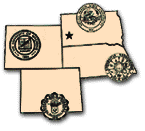Animal Science, Department of

Range Beef Cow Symposium
Date of this Version
2013
Document Type
Article
Citation
Range Beef Cow Symposium XXIII, December 3-5, 2013, Rushmore Plaza Civic Center, Rapid City, SD.
Abstract
The available forage supply for maintaining beef cow herds continues to be threatened by several factors. High commodity prices encourage the conversion of pasture land into crop ground, cities and towns continue to sprawl out into rural areas creating subdivisions where historically cattle grazed, and drought, fires, hail, and insects continue to periodically deplete forage supplies. When forage supplies cannot be located or are not affordably priced; cattle producers must either sell their cattle or feed the cattle in confinement. Feeding beef cows in confinement is not a new concept. However, limit feeding them (less than 2% of body weight on a DM basis) an energy dense diet, with the intent of keeping the cows in the production cycle, rather than finishing them out, needs to be thoroughly evaluated. Keeping cows in confinement 12 months out of the year may not be the most economical scenario, but partial confinement when pastures need deferment or forage is not available, may keep at least a core group of cows from being marketed. Producers will need to know how and what to feed the cows while in confinement to make it feasible. Crop residues, poor quality hays such as those from the conservation reserve program (CRP), and by-products tend to be the most economical ingredients to include in confinement diets.


Comments
Copyright © 2013 Karla H. Jenkins.